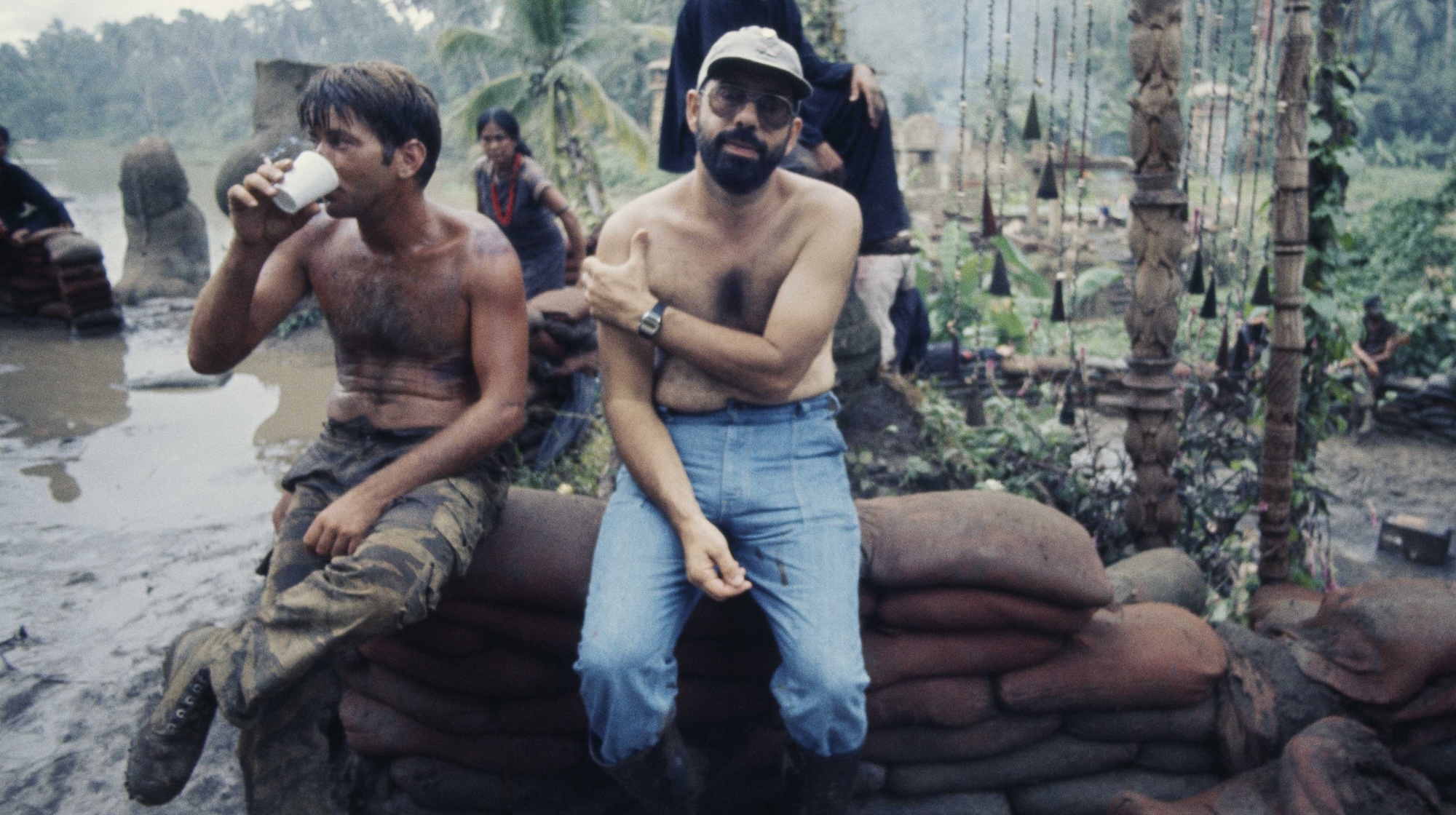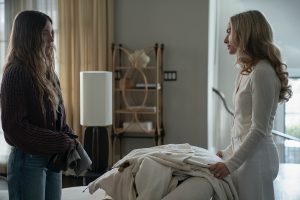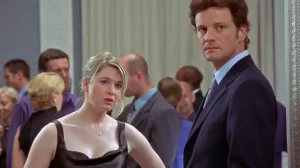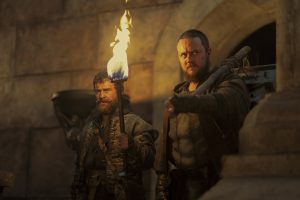
Megalopolis looks nuts. But anyone following Hollywood news knows that things were pretty nuts behind the scenes of Megalopolis as well. In May 2024, The Guardian reported on director Francis Ford Coppola‘s purported bad behavior while shooting the reality-bending epic, from basic disorganization to allegedly sexually harassing an extra. Ever since a stream of accusations, lawsuits, and competing narratives have clouded the publicity around the film.
But in the same way Megalopolis seems to encompass the entirety of Coppola’s six-decade career, behind the scenes stories, legends, and reported craziness is also part and parcel for the director’s work. Here are some of the most bizarre and sometimes harmlessly amusing incidents in Coppola’s unquestionably remarkable career.
Faking It and Making It
Like so many great filmmakers of his era, Coppola got his start with Roger Corman. The recently passed Corman launched the careers of many, in part because of his guerrilla approach to filmmaking, reusing footage from previous films, and incorporating sets and props into several different productions.
Corman struck gold when he took a chance on hiring UCLA film school student Coppola to reedit the 1959 Soviet sci-fi movie, Nebo Zovyot, for American audiences, despite the fact that he couldn’t speak any Russian. However, Coppola did have experience reediting movies into new works, as he did by combining an existing softcore film with new footage he shot, leading to his first credited feature, Tonight for Sure (1962).
Coppola’s reedit of Nebo Zovyot became 1962’s Battle Beyond the Sun, which made enough money for Corman to give the young man a shot at directing his first proper feature, Dementia 13, in 1963. Of course, Coppola wanted to do more with his horror picture than the $20,000 that Corman gave him. So Coppola got another $20,000 from a different investor, in exchange for Dementia 13‘s English rights.
“So I had now $40,000. Roger, of course, expected to get his $20,000 back, still make the movie for the 20 with the English rights, and get the film for free,” Coppola told the Academy of Achievement. “But I sort of just duped him. I took both checks and I put it in the bank. And I had this young woman sign the check, and I just kind of made the amount to the whole amount, so she basically was out of the check signing.”
Apocalypse Now Almost Killed Him… and Everyone Else
When George Lucas had the idea of adapting Joseph Conrad’s Heart of Darkness as a Vietnam allegory, he planned on something small, sleek, and real. But when Lucas turned the idea over to his partner Coppola, Apocalypse Now became the exact opposite.
Few would dispute that Apocalypse Now is a masterpiece, but the making of the movie was its own type of quagmire. Coppola made deals with Philippine President Ferdinand Marcos to get choppers and space to film, even though the aircraft had to sometimes leave mid-shooting to fight off rebels. It’s no wonder that he lost nearly 40 pounds during the filming and even talked on film about killing himself (his wife was the one holding the camera).
Coppola fired his star Harvey Keitel just a few weeks into the shooting, and replacement Martin Sheen had a heart attack shortly thereafter while shooting on location. According to Coppola’s wife Elenor in the behind-the-scenes documentary Hearts of Darkness, Sheen “even received last rites from a priest who did not speak English.” Worse, everyone worried that the studio would crack down on the already troubled production, so Sheen and Coppola called it heat stroke, took six weeks off, and went back to work.
And that doesn’t even get into Coppola’s decision to film a local tribe sacrificing a live bull (that’s a real slaughtered animal in the movie), seeing Dennis Hopper going off to live in a cave, or all of the tricks he had to use to get Brando, who came to set overweight, disinterested, and unprepared, to deliver his few lines. Cue cards were employed.
One From the Broken Heart
Throughout his career, Coppola has wanted nothing more than to call his own shots, free from studio interference. His best hope for that dream came when he launched Zoetrope Studios in 1980, an independent production company where creatives could do what they want. And to show off the full capabilities of Zoetrope, Coppola made a lush, romantic pseudo-musical called One From the Heart.
Somehow, though, Coppola goes even more over the top with One From the Heart than he did on Apocalypse Now. He insisted upon complex and detailed sets, a hermetic space to have complete control over the production. Coppola even recreated part of a Las Vegas airport on set for the film’s flashy finale. Throw in some original songs from Crystal Gayle and Tom Waits, and it’s not hard to see how the budget swelled from $15 million to $26 million.
Coppola certainly got to make the movie he wanted. And One From the Heart is unique and beautiful. But it’s also completely boring, which is why it flopped in theaters. It flopped so badly that it tanked Zoetrope Studios. Worse, it forced Coppola to do anonymous studio work, and the nightmare that is Jack.
Winona Ryder Got Married
Coppola’s creative cold streak broke with Bram Stoker’s Dracula in 1992, a gorgeous and ambitious take that puts a fresh spin on the vampire story and which was a box office hit. Yet even that production was not without its oddities.
Winona Ryder brought the script to Coppola as something of peace offering after the actress bowed out of The Godfather, Part III, creatinga void that the director’s daughter Sofia filled at the last minute, much to her and the film’s woe as they were maligned by critics. Coppola held no ill will and happily went to work with Ryder a few years later. Yet it’s oddly fitting Ryder would become the center of Coppola’s oddest incident on the Dracula set.
For a scene in which Ryder’s Mina marries Keanu Reeves‘ Jonathan Harker, Coppola employed real Greek Orthodox priests, who performed a real (and spiritually binding?) ceremony. Although no one really takes the coupling very seriously, Ryder told the Happy Sad Confused podcast (via Variety) that she and Reeves go along with the idea. “[W]e always say who it is, even though it says it on the text. So like on his birthday I go: ‘Happy birthday, my husband.’ And then he’s like, ‘Hey, my wife, I love you. KR 57.’ Like on each birthday he’s like KR 57 or whatever his age is. He’s always done that.”
Of course, it wasn’t all happiness on the Dracula set, at least not for Ryder. In an interview with the Sunday Times, Ryder recalled that the director tried to get her in character for a scene where her character is discovered drinking from the blood of a vampire by yelling “you whore!” at her. Worse, he encouraged the male performers to do the same. “Francis was trying to get all of them to yell things that would make me cry. But Keanu wouldn’t, Anthony [Hopkins] wouldn’t.” Coppola, of course, added his take on the events, and Ryder now insists that the two are “good.”
So maybe the movie’s tagline is right, and love never dies. At least Ryder and Reeves came out of the situation smiling, making the wedding one of Coppola’s better behind the scenes oddities.
Tetro’s Troubles in Argentina
Coppola’s insistence on using “canceled” actors for Megalopolis might have its roots in 2009’s Tetro. After all Tetro stars Vincent Gallo as a very troubled playwright who reconnects with his half-brother (Alden Ehrenreich in his first movie role).
Coppola shot the movie in Argentina to take advantage of the location but ran into trouble when burglars stole all of his equipment. “Anyone who’s gotten robbed, it’s always depressing, and I did lose some data,” he told Collider in 2007. “I didn’t lose the script. They said the script is gone, but I have other copies of the script. Obviously I had to send it to actors and stuff, so no. I was astonished that that got such news coverage.”
However, the real problem came when the Argentine Actor’s Union halted production in 2008, charging that “members were working on the film with incomplete or unsigned contracts.” Although Coppola’s team disputed the claims, the Union insisted that shooting only began when their concerns were addressed. “The lawyers for the producers presented the necessary documentation and recognized the errors that they had made. So now they are able to continue with production,” union representative Norberto Gonzalo said at the time.
Whatever happened first, it’s clear that the problem was resolved and Coppola was able to finish the film. And a good thing too, as Tetro may very well be the legendary director’s last great film, a fine movie and relatively minor bit of background drama after a career filled with so much more.
Megalopolis opens in theaters on September 27, 2024.
The post Francis Ford Coppola’s Most Legendary On-Set Stories appeared first on Den of Geek.





